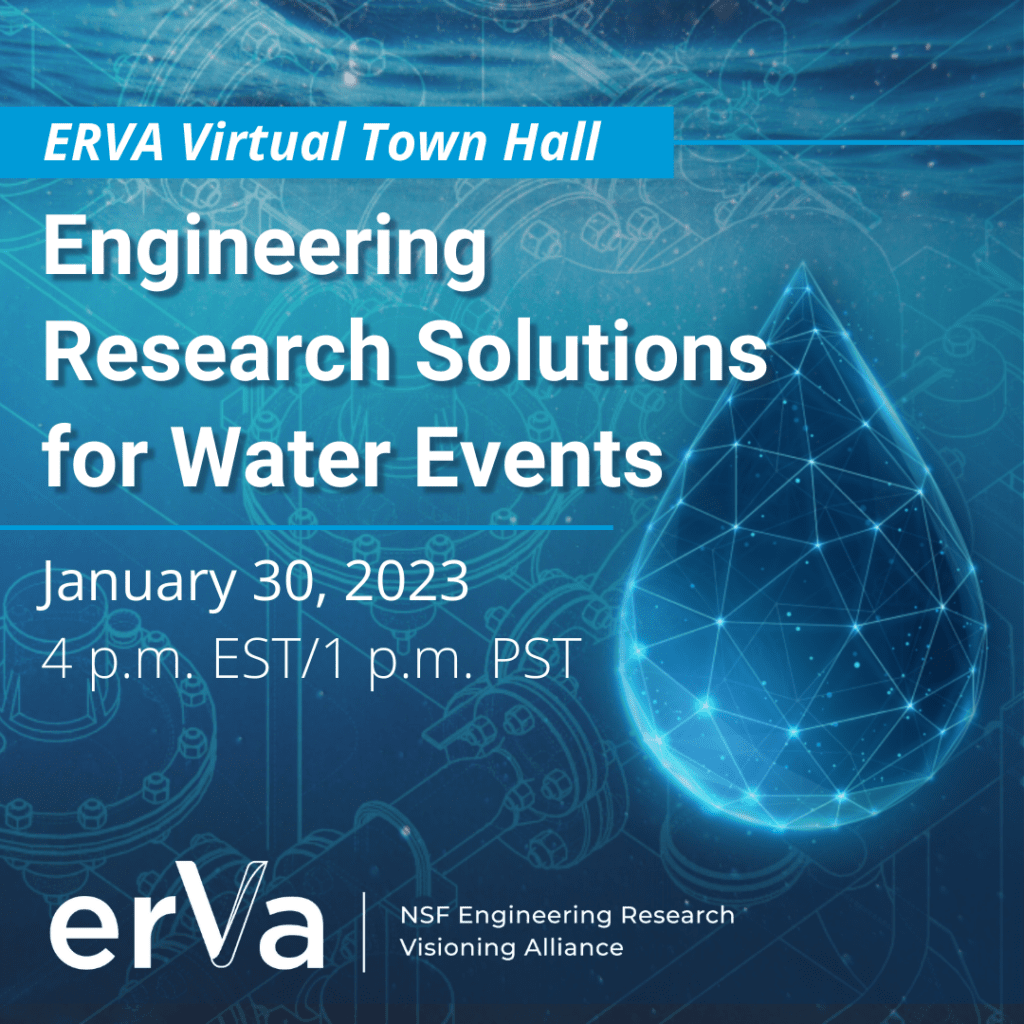Read the summary and watch the recording
On Jan. 30, 2023, a Virtual Town Hall convened by the Engineering Research Visioning Alliance (ERVA) explored the topic of Engineering Research Solutions for Water Events: The Recent California Floods. The event featured the expertise of University of California Irvine professors David Feldman and Brett Sanders and was moderated by Anna Gemolas of DuPont Water Solutions.
The event was motivated by extreme weather events in the month preceding it. Heavy rains triggered flooding, power outages, and over 700 landslides; these events have caused at least 20 deaths and over $1 billion in damages.[1] Climate change makes extreme events—drought cycles and severe flooding—increasingly likely, and its role in recent California rain events is the subject of current investigations. However, it is clear that global warming leads to more water vapor in the atmosphere, playing a key role in catastrophic rain events.

California and other sites of such events face the reality that stormwater from these floods is not systematically captured or stored to address future needs. This is a concern as California and other Western U.S. states were scorched by drought for much of 2022, and an overarching megadrought has had its grip on the West for over 20 years.[2] Stormwater is a challenge as it can be both a potential resource and a pollutant. Although the science of pre-treatment in runoff is well-known and established, adjoining communities must agree to accept water that potentially impacts both managed systems, even if they have different standards for health and environmental protection. Users must reach common ground on water end uses and regulatory standards. Stormwater management is exacerbated by the limited time available in some areas to capture and store it—and the intended use/treatment of the captured water— for example, landscaping that would not compete with drinking water. A mix of green infrastructure (e.g., swales for infiltration) and gray infrastructure (e.g., cisterns, distributed treatment systems) will be needed. Innovative engineering solutions must be developed and implemented to mitigate damage from flooding and capture water from future events for community use if we hope to benefit from these events.
Town Hall panelists considered the causes of these disasters, challenges to rebuilding and re-envisioning infrastructure, and ways stormwater can be harnessed for community benefit. They also discussed how digital tools, including simulation technologies, could assist in effective stormwater management. Download the full summary and watch the recording below.
[1] Masters, J. (2023, Jan. 27). Climate change is increasing the risk of a California mega flood. Yale Climate Connections. Retrieved Jan.30, 2023 from https://yaleclimateconnections.org/2023/01/climate-change-is-increasing-the-risk-of-a-california-megaflood/.
[2] Thomson, J. (2023, Jan. 6). Is California still in a drought? Newsweek. Retrieved Jan. 31, 2023, from https://www.newsweek.com/california-drought-still-climate-change-rainfall-1771800.